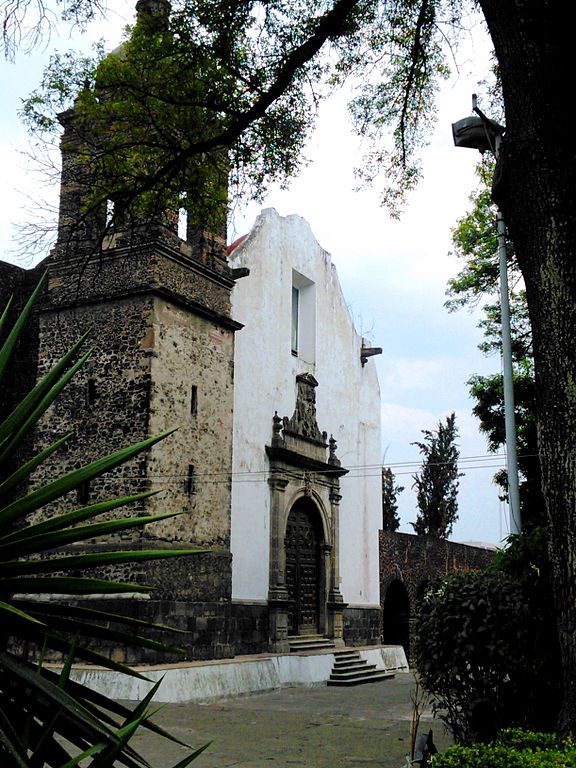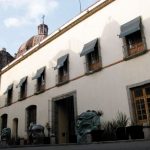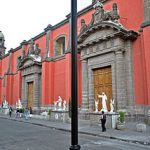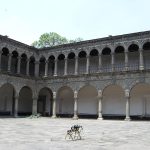
__
The Temple of San Pablo el Viejo is among the earliest chapels built to serve the indigenous population of San Pablo Zoquipan. This was one of the four original neighborhoods of San Juan Tenochtitlan. (The other three were San Juan Moyotlan, Santa María Cuepopan, and San Sebastian Atzacoalco.
Here, the old temple is almost completely subsumed within a modern medical complex. The Augustinians had been assigned this parish, already in the late 16th century. They struggled to shake off the parishioners, for the purpose of building and operating a colegio as a center of learning in the new world. They eventually succeeded. To do so, they had to pay for the new parish church, the Temple of San Pablo el Nuevo. It’s said that 60 crates of books were sent from Spain along with medieval manuscripts, astrolabes, and library equipment.
The building we see today (pictured) dates from 1581 after an even earlier temple was demolished. But over three centuries, their school came to be the biggest in New Spain. It remained so until the USA invasion of 1847 when the temple itself was used as a hospital. Within 13 years, the entire complex was turned over to the growing hospital.
Today, from the street still named for their church and college, the Plaza San Pablo, only the trees in front are really visible. You can catch a glimpse of the façade of the old Temple of San Pablo el Viejo through the fence. A carved stone altar and an open chapel are preserved inside. In 1930, the dome collapsed completely but in repairing it, the temple was adapted for use as an auditorium by the hospital community. The rest of the grounds are nearly completely subsumed within the Hospital Juárez Centro complex. San Pablo el Nuevo is just up the same street, and remains a bit more accessible.

One of the Center City's most beautiful of Baroque chapels is almost at the southern edge of the island.

The former Santa Inés Church & Convent provides some lively competition on a City Center street.

One of the city center's most illustrious former convents is still a sight to see.

All that's left of the old monastery that named the neighborhood that's as "Mexico City" as any.

One of the 18th Century's best examples of the new Neo-Classicism, a church holds its own in La Merced.